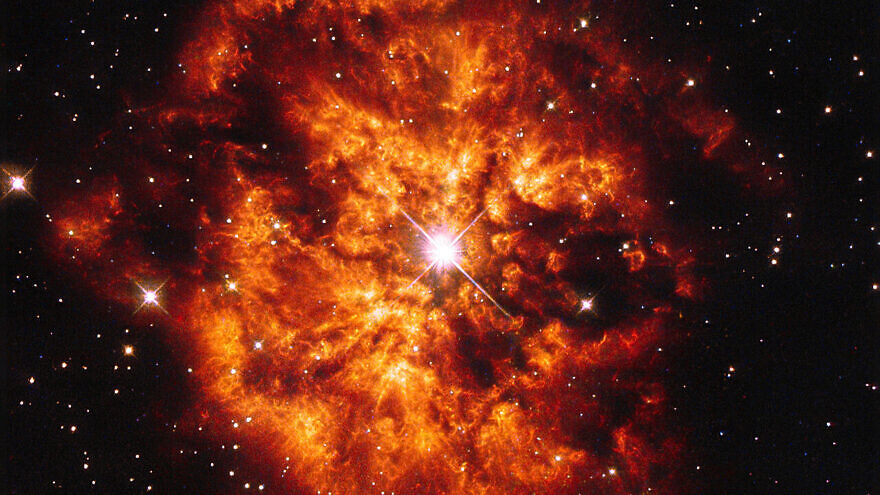Such stars are those missing one or more of their external and generally lighter layers, and instead have outer layers made up of helium, carbon or other heavier elements.
(January 12, 2022 / JNS) Israeli scientists from the Weizmann Institute of Science have discovered a rare type of exploding star that has never been observed before, according to a report published on Wednesday in the peer-reviewed British weekly scientific journal Nature.
The discovery, led by Professor Avishay Gal-Yam of the school’s Particle Physics and Astrophysics Department, was the observation of the supernova explosion of a Wolf-Rayet star.
“Supernovae is the scientific name for exploding stars, which may seem like colossal events happening far away but “are at the heart of life itself,” he said. “These cosmic explosions launch the elements that were forged at the star’s core to the far reaches of the galaxy, where they serve as the bedrock for the birth of new stars. Planet Earth and all its various and diverse lifeforms (including us Homo sapiens) are the results of such an occurrence.”
Wolf-Rayet stars are those missing one or more of their external and generally lighter layers, and instead have outer layers made up of helium, carbon or other heavier elements.
“Spectroscopic analysis of the light emitted from the explosion—the electromagnetic wavelengths of light emitted from the blast—led to the discovery of spectral signatures that are associated with specific elements,” according to a release by the Weizmann Institute. “In this way, the researchers were able to show that the explosion contained carbon, oxygen and neon atoms, the latter an element that has not yet been observed in this manner in any supernova to date. Moreover, the researchers identified that the matter spouting cosmic radiation did not in itself participate in the blast but rather originated from the space surrounding the volatile star.”
“This is not the ‘silent’ collapse often referred to in the past,” said Gal-Yam. “We study the origins of all matter, including that found on Earth, and search for explanations of many of the physical phenomena we tend to take for granted. This is what I am personally interested in—where did all of this come from?—and I want to be able to answer this question as best and as accurately as I can.”
